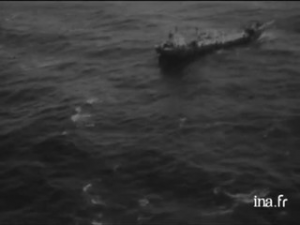Author: Beatrice Camarlinghi

Radio Luxembourg started broadcasting on a radio frequency that was not allocated to the station by the International Broadcasting Union. Due to this fact, Radio Luxembourg had been qualified as a so-called “pirate station” until the station had been allocated a national frequency at the Kopenhagen Radio Conference in 1948. As the station operated as a private or commercial broadcaster, its main ambition was to reach the greatest audience possible – and therefore ignored some of the legal criticism that requested Radio Luxembourg to obey international rules.
It was only in the 1950s and 1960s that the term “pirate station” became associated with a new form of clandestine broadcasting practices – that is to broadcast from a ship operating in international waters. Bypassing national regulations, censorship and taxes pirate radios in the 60s claimed to be independent and challenged the monopoly of public service radio stations like the BBC.
Ironically, it was the former “pirate” Radio Luxembourg that now became affected by the nautical radio stations. As they both relied on sponsors to finance their activity they were in direct concurrence. National governments did not appreciate the music of the corsairs either as they did not pay taxes on the transmission of popular music tunes and interfered with national radio transmissions.
Sources:
http://www.ina.fr/video/CAF96032180/bateaux-radio-pirates-video.html#xtor=AL-3
HARRIS, Paul, When Pirates Ruled the Waves, Aberdeen: Impulse Publication, 1970, pp. 215.
AnLux AE- 13371 Comité Juridique pour la radiodiffusion et la television 1962-1963
-Lettre du 20 juillet 1963 du Ministre d’Etat au Ministre des affaires étrangères
BADENOCH, Alexander, Between Rock and Roll and a Hard Place: ‘Pirate’ Radio and the Problems of Territory in Cold War Europe, in: Airy Curtains in the European Ether, Broadcasting and the Cold War, Badenoch, A., Fickers, A., Henrich-Franke, Ch., (ed.), Baden-Baden, Nomos Verlagsgesellschaft, 2013, pp. 297-319.
